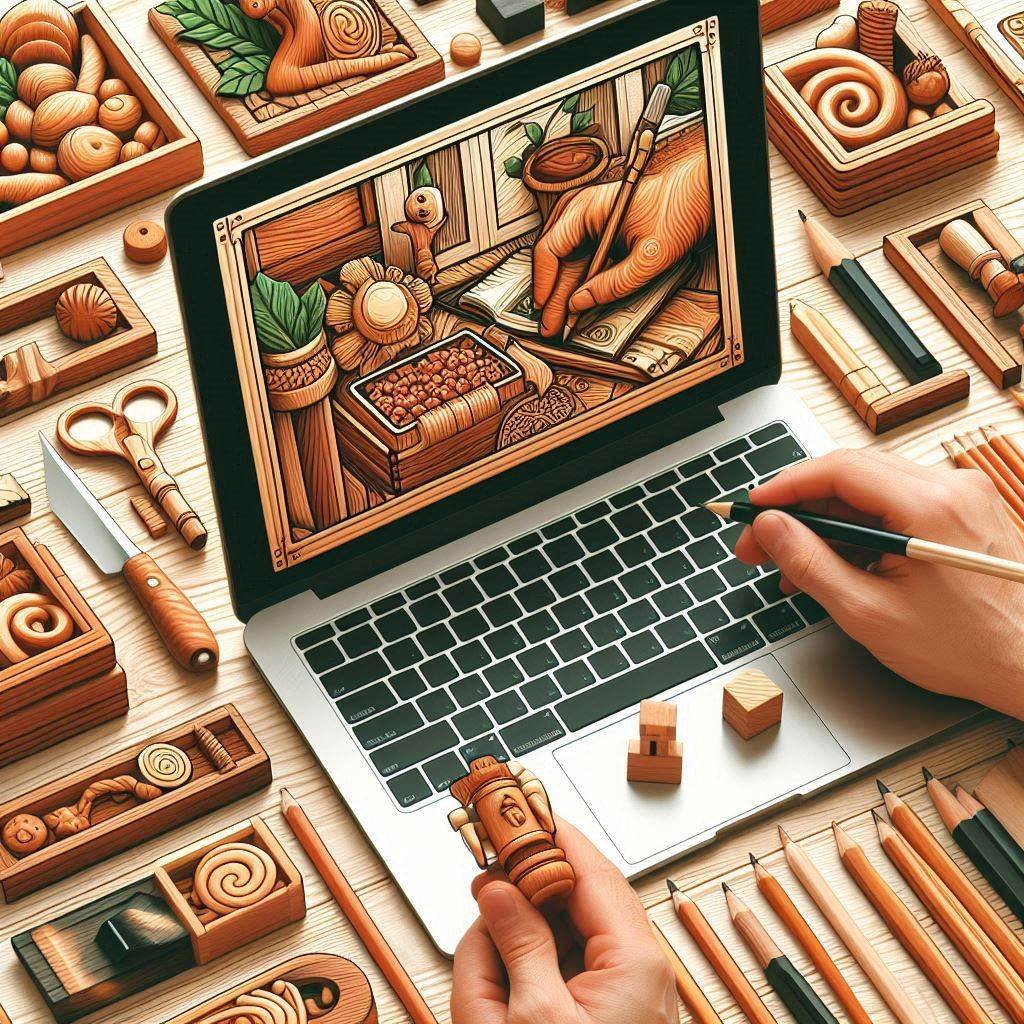How to Start a Wood Carving Hobby: Tips for Beginners

Wood carving is an ancient and rewarding hobby that allows you to transform a simple piece of wood into a work of art. Whether you’re looking for a creative outlet, a way to relax, or even a potential side business, wood carving is an excellent choice. In this guide, you’ll learn how to start a wood carving hobby, what tools and materials you need, the different carving techniques, safety precautions, and how to improve your skills over time.
Benefits of Wood Carving
1. Improves Creativity and Artistic Skills
Wood carving helps develop your artistic side by allowing you to create detailed and unique designs.
2. Enhances Focus and Patience
Since wood carving requires precision, it improves concentration and patience over time.
3. A Stress-Relieving Hobby
Many people find wood carving to be meditative and relaxing, making it a great way to unwind after a long day.
4. Affordable and Sustainable
Wood carving requires minimal investment in tools and materials, and you can use reclaimed wood to be environmentally friendly.
5. Opportunity for Business
Once you’ve mastered wood carving, you can sell your handmade pieces on platforms like Etsy or start a blog about your carving journey.
Different Types of Wood Carving Techniques
1. Whittling
- The simplest form of wood carving, done using a knife.
- Commonly used for making small figurines and objects.
2. Relief Carving
- Designs are carved into a flat wooden surface.
- Used for decorative plaques and wall art.
3. Chip Carving
- Uses chisels to remove small chips from the wood surface.
- Popular for geometric patterns and decorative carvings.
4. Carving in the Round
- Three-dimensional carving that results in lifelike sculptures.
5. Chainsaw Carving
- An advanced technique that uses chainsaws to create large wooden sculptures.
Essential Tools & Equipment for Beginners
1. Knives
- Whittling knives
- Detail knives
- Chip carving knives
2. Chisels & Gouges
- U-gouges and V-gouges for detailing
- Flat chisels for smoothing surfaces
3. Mallets
- Used for applying force to chisels while carving harder wood.
4. Sharpening Tools
- Strops and honing compounds to maintain sharp blades.
5. Safety Gear
- Carving gloves
- Thumb guards
- Dust mask to prevent inhaling wood particles
Choosing the Right Type of Wood for Carving
Best Woods for Beginners
- Basswood – Soft and easy to carve.
- Butternut – Lightweight with a natural grain.
- Pine – Easily available and affordable.
Woods for Advanced Carvers
- Walnut – Harder wood with a rich texture.
- Mahogany – Great for detailed and polished carvings.
Step-by-Step Guide to Starting Wood Carving
Step 1: Pick Your First Project
- Start with simple projects like spoons, animals, or abstract shapes.
Step 2: Sketch and Plan
- Draw your design on the wood before carving.
Step 3: Secure Your Wood
- Use a carving bench or clamps to prevent movement.
Step 4: Begin Carving
- Use basic cutting techniques, such as push cuts and stop cuts.
Step 5: Sand and Finish
- Smooth your carving with sandpaper and apply a wood finish to protect it.
Safety Tips for Wood Carving
- Always carve away from your body.
- Use safety gloves to prevent cuts.
- Keep your tools sharp to avoid slipping.
- Work in a well-ventilated area.
Common Mistakes Beginners Should Avoid
- Using the wrong type of wood.
- Applying too much pressure while carving.
- Not sharpening tools regularly.
- Rushing through projects instead of learning gradually.
Advanced Wood Carving Tips for Progression
- Try using rotary tools for precision.
- Experiment with different types of finishes such as staining or painting.
- Carve more complex figures and sculptures.
Resources for Learning & Improving Your Skills
- Books: “The Complete Book of Woodcarving” by Everett Ellenwood.
- Online Courses: Platforms like Udemy and Domestika.
- Communities: Join forums like Woodcarving Illustrated.
Turning Wood Carving into a Business
- Sell handmade carvings on Etsy or Amazon Handmade.
- Create a blog about your journey (How to Start a Blog).
- Teach wood carving workshops.
Frequently Asked Questions (FAQs)
1. How long does it take to learn wood carving?
It depends on your dedication, but beginners can start making decent projects within a few weeks.
2. Can I start wood carving with no experience?
Yes! Start with basic tools and softwood like basswood.
3. What is the easiest project for a beginner?
Simple items like wooden spoons, small animals, or geometric patterns.
4. Do I need expensive tools to start wood carving?
No. A basic carving knife and softwood are enough to begin with.
5. How do I maintain and sharpen my carving tools?
Use a sharpening stone and strop regularly to keep tools sharp.
Conclusion
Wood carving is a fulfilling and accessible hobby that allows you to create beautiful handcrafted pieces while improving your focus and creativity. Whether you’re carving for fun, relaxation, or profit, this guide provides everything you need to get started. Remember to be patient, practice regularly, and always prioritize safety
